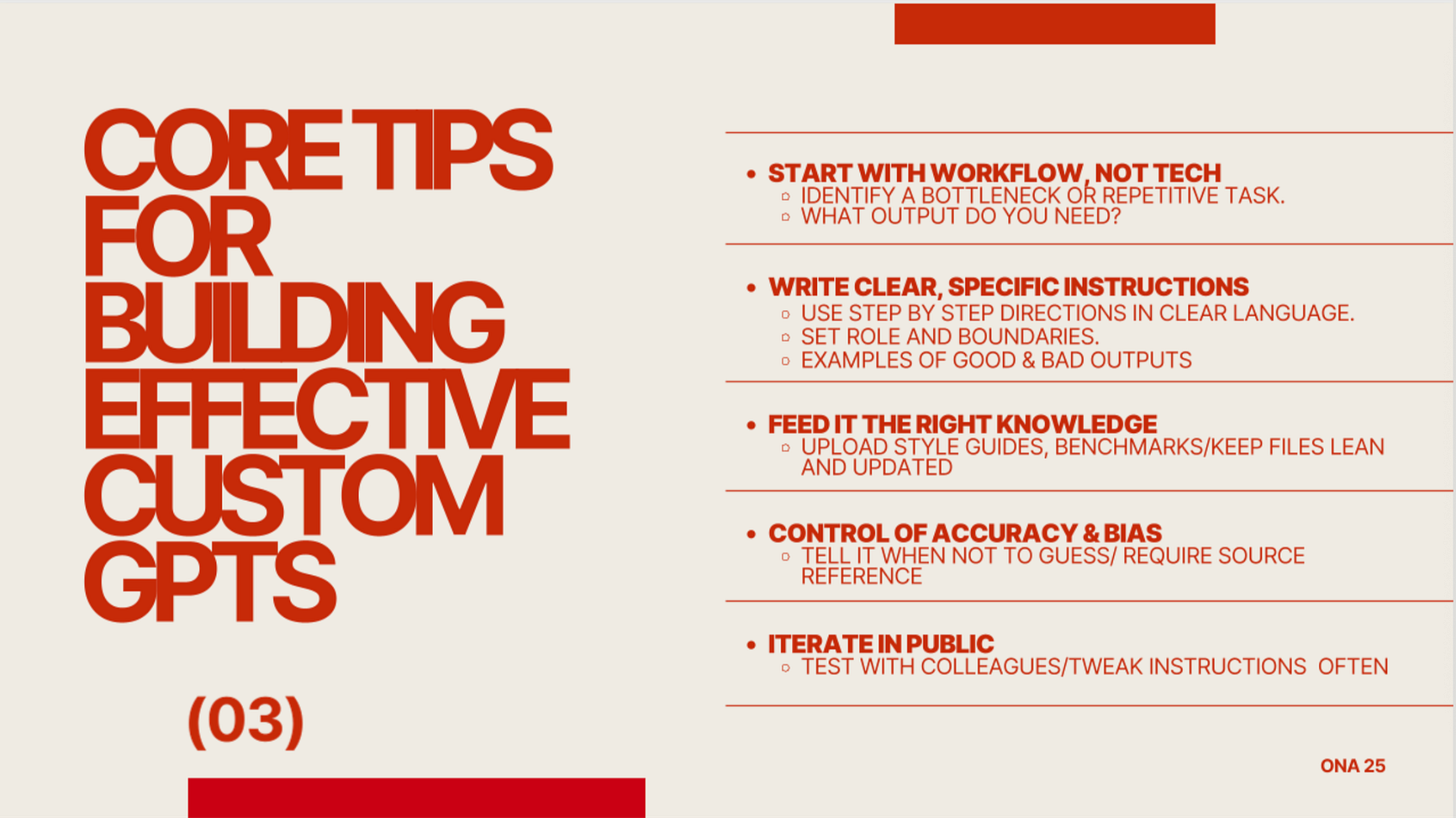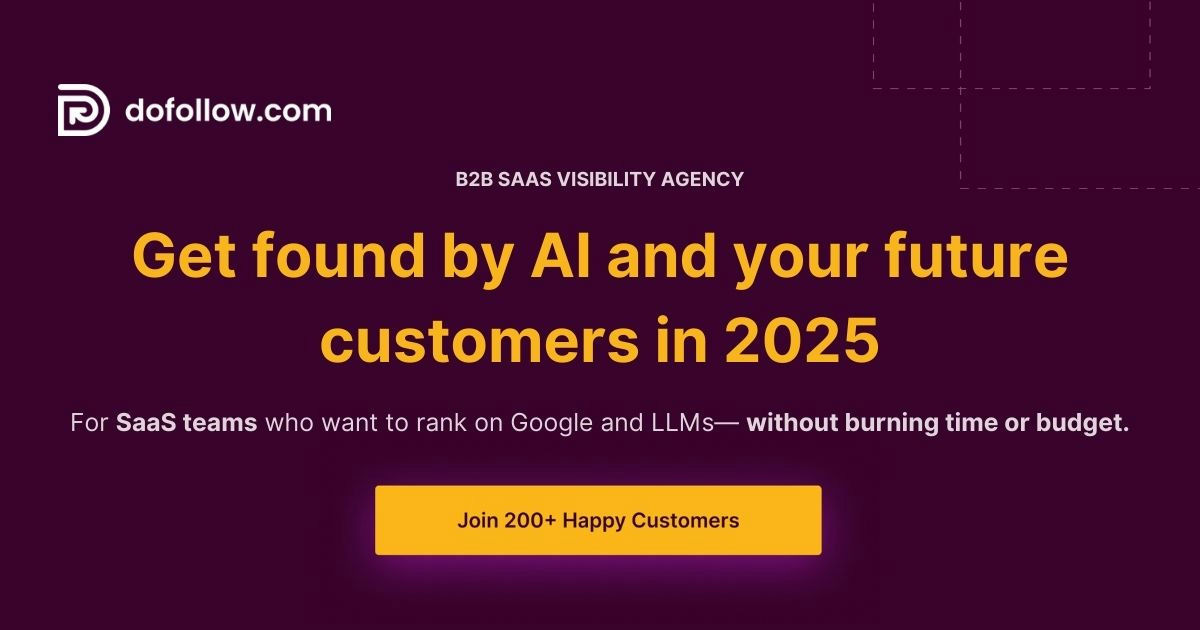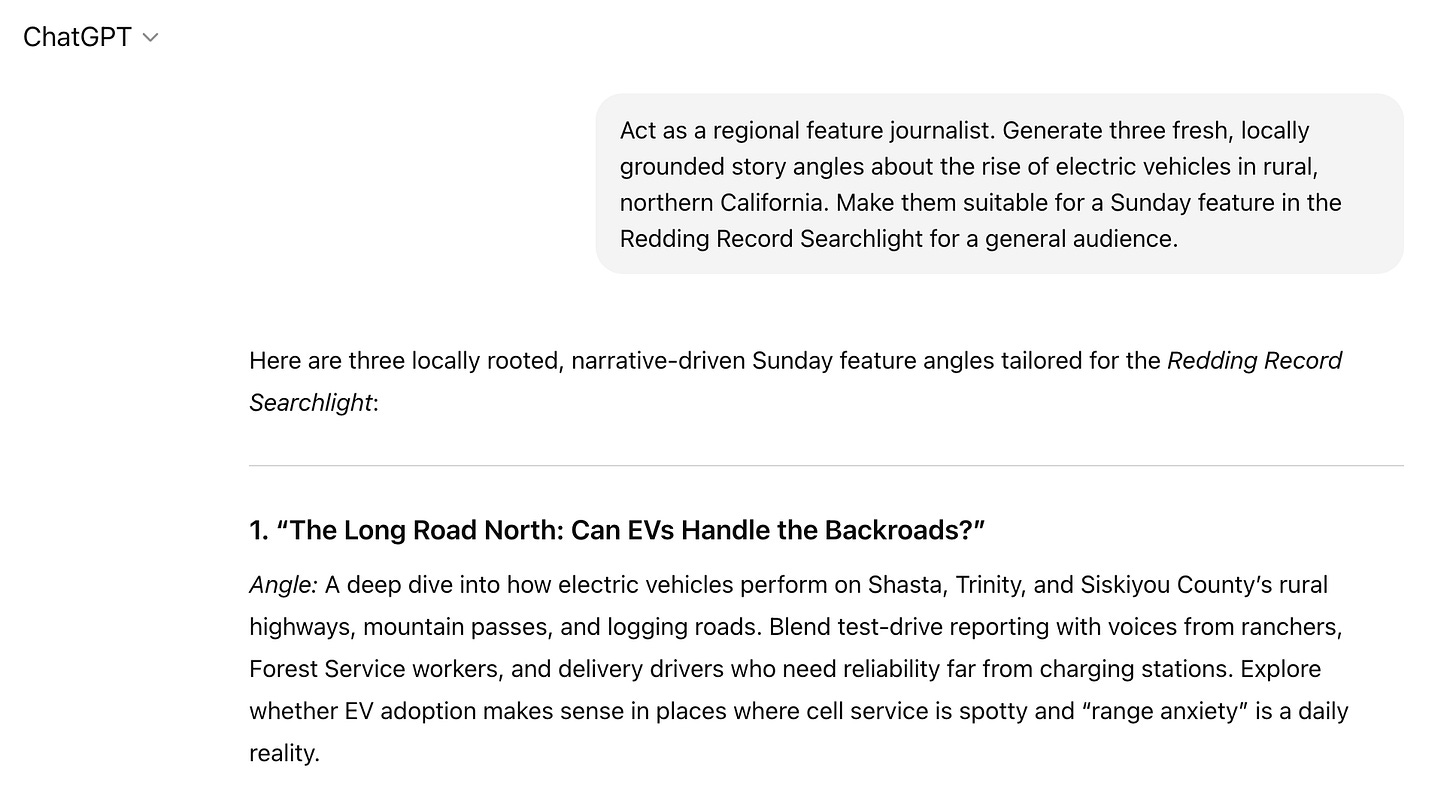What we learned at #ONA25
We’ve got an overview of key themes, notes from our favourite sessios and a recap of our talk about the value of brand and people in an AI world
#SPONSORED
Search visibility for the AI era
Google updates and LLMs are rewriting results, making it harder for SaaS brands to stand out.
With dofollow.com, you can:
Land links on authoritative, industry sites
Win rankings for the keywords that drive pipeline
Show up in AI search results
Trusted by Surfshark, Experian, Pitch and more.
Hello, and welcome back. Jessie and Shelby here, reporting from Toronto after a whirlwind week at the Online News Association conference in New Orleans. We were so thrilled to join a top-tier roster of speakers on core topics like climate reporting, audience development, AI and media resilience.
We were extra happy to not only meet a ton of subscribers, but finally give away some totes!
As (pretty outgoing) introverts, we’re both happy to be at home, alone, sitting in silence for the next (several) days.
This week: A recap of ONA, including key audience and SEO themes, notes from some of our favourite sessions and, of course, highlights (and a link to the slides) from our presentation.
Join our community of news SEOs on Slack to chat any time.

Let’s get it.
AI IN NEWS
Prompt like a pro: AI skills every journalist needs
Yumi Wilson, a Professor at San Francisco State University, shared tips for creating better ChatGPT prompts.
“The better the prompt from the beginning, the better the first output,” Yumi said, before outlining her four-part structure:
Be clear and precise: State the topic, scope and format of the output so the AI model knows what to focus on;
Include context: Provide necessary background information. For example, explain who the audience of the story is (i.e., local or national).
Give it a role: Who should the AI embody (i.e., an editor, teacher, expert) when it creates the output?
Define a goal for the output: How should the AI write the response (i.e., the length or word count)?
In the example, Yumi’s first, generic prompt was, “generate story ideas for electric vehicles.” But ChatGPT is confused about “story ideas.”

From there, she revised the prompt, which you can see below.
The output for the second prompt is much more helpful and nuanced.
An important caveat: AI can hallucinate. It can make up facts, quotes or citations — and all outputs must be rigorously fact-checked by a human editor.
EVEN MORE AI TIPS
AI was covered in depth during ONA. Here are some additional highlights
Jess Davis, the Vice-President of News Automation & AI Product at Gannett, discussed Key Points, an AI-powered, human-vetted summary feature at the top of articles. “It’s the sweet spot of doing AI well,” she said, noting Key Points drove a lift in engaged time on stories with it. The feature takes reader trust seriously — it’s clearly labelled as using AI and links back to the publication’s editorial policy. AI also helped Gannett revive local events calendars for regional papers, taking community suggestions and building out robust listings for local audiences.
Alba Mora-Roca, Katarzyna (Cathy) Rainone and Martin Schori shared tips for custom GPT prompts. To start: If you're not sure how to prompt ChatGPT, just ask it. State the goal and ask the AI to write an effective prompt. (Tip: OpenAI has an analyzer to debug those prompt that don’t work). To better organize your prompt, the panel introduced this workflow: start with a goal, use case, interaction style, the specific details and provide an example for the AI to use.

AUDIENCE ENGAGEMENT
Lessons from non-traditional news sites in growing trust and audience
One of the most memorable talks from the conference was an enlightening case study from non-traditional news sites on building loyal audiences and trust.
Speakers S. Mitra Kalita, Raju Narisetti, Rohit Agarwal and Dave Meyer repeatedly returned to one theme: trust is the ability to communicate and deliver on a promise. Audiences, especially younger generations, follow trustworthy creators over brands, and outlets must provide clear value — saving people time, money or improving their lives — to earn loyalty.
On growth, the speakers shared several approaches. Paid acquisition can be powerful if it helps attract the right kind of audience. URL Media, for instance, saw strong returns on LinkedIn, while smaller outlets noted even modest ad spend can drive significant subscriber bumps.
McKinsey took the opposite approach, leaning on its first-party data from over 30,000 executives to produce insights. These were referenced by major businesses, reinforcing McKinsey’s authority. BiggerPockets stressed diversification across platforms, while The Weather Company focused on utility-first products that users naturally use (hello, weather app!).
Speakers acknowledged the volatility of today’s ecosystem. Raju said they experienced a 23 per cent year-over-year drop in search, pointing to AI’s impact, but stressed, “I can generate content, but I cannot generate trust.”
AI’s role was framed as support, not replacement. BiggerPockets keeps research human-led, then repurposes across formats with AI. McKinsey uses AI for translations, accessibility and A/B testing — but ultimately relies on human judgment to sustain credibility.
The key takeaway: Success today comes from authenticity, community and consistent value, not chasing scale and algorithms.
AUDIENCE ENGAGEMENT
Nail salons, barber shops, eyebrow waxing and soccer: Everything goes in when it comes to engaging with audiences
For some younger audiences, barbershops and beauty salons have become unexpected hubs for civic dialogue. This great session by María Arce and Brittani Howell showed how five local newsrooms were engaging with communities in unconventional ways. What started as an event to provide people in the community haircuts expanded to include conversation, and community. The intimacy of those spaces created vulnerability within people and in turn, trust — making political conversations more approachable. The lesson: people may not walk into a newsroom, but they will gather where they already feel comfortable.
Similarly, outreach to Hispanic communities succeeded by centering the three F’s: food, family and fútbol. One newsroom turned a health fair and school registration drive into an annual tradition by partnering with trusted local organizers. Collaborating with community partners ensured events felt authentic and mission-driven, while providing tangible value to readers.
Other experiments included hosting “Suds and Civics” events in laundromats with low voter turnout communities and offering media literacy in everyday gathering places. These initiatives proved that consistent presence and partnerships foster repeat visits, even inspiring newsletters that are now successful.
The takeaway: journalism doesn’t need to reinvent itself, but should meet people where they are. Find the right place, look for the right partners, be patient and give them something first.
WTF is SEO?’s SESSION
In an AI world, your brand and people are your advantage [slides & tipsheet]
ChatGPT, Google’s AI Overviews, AI Mode and other AI-powered tools are reshaping search, and reducing — sometimes dramatically — search traffic to publisher sites. So, what should publishers be focusing on? Brand and people are the core factors that will help publishers stand out.
It’s all about brand differentiation. Being the best in the world at something that your well-defined audience cares about — and will convert for — is the best defence against the volatility of algorithms and platforms. The brands that can weather the looming traffic apocalypse are the ones that are known for something — and lean into it.
Authorship is fundamental. Your authors make it possible to showcase E.E.A.T and topic authority. Highlight your authors' credential on author bios, showcase where they're writing for and get them engaged off-platform — including Reddit, podcasts and newsletters. People trust people: repeat visits to a particular writer established a habit, and that builds long-term audience loyalty.
To thrive, publishers should double down on people-first strategies, like authorship, investing in niche coverage and tools and putting high-quality, unique content at the centre of your strategy. In short, do what AI can’t.
The bottom line: The Online News Association conference is a massive event with tons of information to be shared. We found valuable audience insights that we’re excited to bring back to our newsrooms.
#SPONSORED - The Classifieds
Get your company in front of more than 13,000 writers, editors and digital marketers working in news and publishing. Sponsor the WTF is SEO? newsletter!
RECOMMENDED READING
Google news and updates
🤖 Barry Schwartz: AI Mode expands to include five new languages: Hindi, Indonesian, Japanese, Korean, and Brazilian Portuguese.
🤖 Matt G. Southern: Google says it will drop Search Console reporting for six structured data types.
🤖 Barry Schwartz: Google has updated the Search Quality Raters guidelines to add AI Overview examples & YMYL definitions.
Even more recommended reading
❓ Aleyda Solís: The SEOFOMO State of AI search optimization survey
❓ Danny Goodwin: AI search optimization? GEO? SEOs don't agree on a name, according to a survey.
🗞️ Mark Sweney: How Google’s shift to AI has upended the online news model.
🧑💻 Varsha Bansal: How thousands of ‘overworked, underpaid’ humans train Google’s AI to seem smart.
💼 Ben Fritz: Rolling Stone publisher sues Google over AI Summaries.
📈 Dan Popa: Here’s how Google click through rates for your website’s industry have changed in the second quarter of 2025.
What did you think of this week's newsletter?
(Click to leave feedback.)
Catch up: Last week’s newsletter
Have something you’d like us to discuss? Send us a note on Twitter (Jessie or Shelby) or to our email: seoforjournalism@gmail.com.
Written by Jessie Willms and Shelby Blackley








